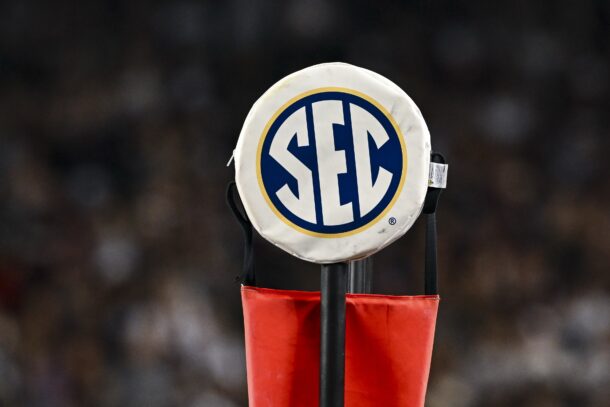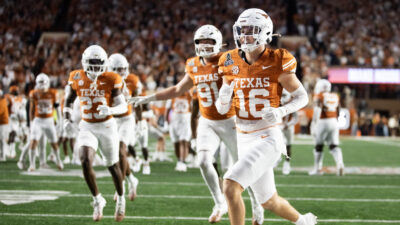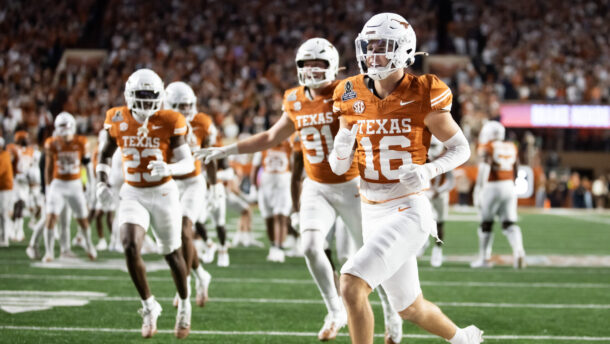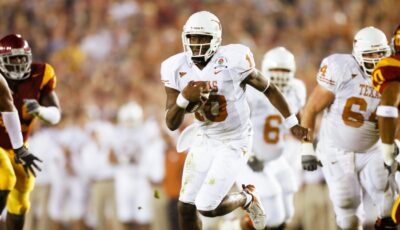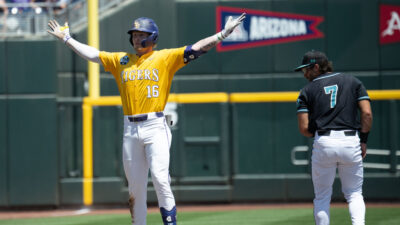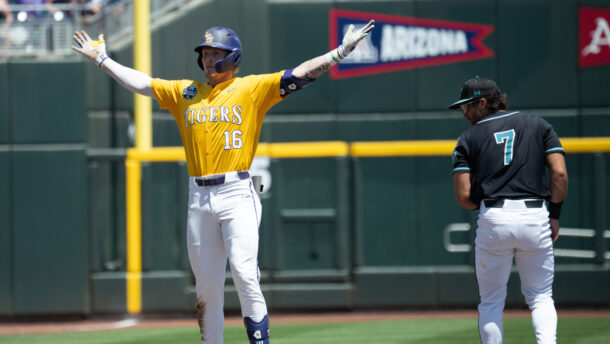Fans and the media have produced a relatively large amount of consternation and grousing this week about Maty Mauk’s poor completion percentage in Missouri’s three fall scrimmages.
After combing through tweets from those in attendance at the scrimmages, looking at the team-provided stats and checking out quotes from the players and coaches, multiple factors contributed to Mauk completing less than 40 percent of his throws in the final two scrimmages.
Mauk tried to play hero ball on occasion, forcing ill-advised decisions. He missed on some throws. The receivers, as expected, don’t seem as polished as last year’s group.
Offensive coordinator Josh Henson and coach Gary Pinkel raised another potential influencer to the St. Louis Post-Dispatch on Monday: The pass protection.
Here’s Pinkel’s full quote, which to be fair, appeared to be somewhat motivated as an attempt to deflect blame and pressure on Mauk:
We examine why things work and why they don’t work in the passing game. You look at protection. You look at assignment of protection. You look at technique of protection. … Is the quarterback getting rid of the football? Is he running for his life? All those things have a big effect on your passing game. Your quarterback’s reads, his ability to throw accurately — that’s hugely important. And the receiver part, being in the right place at the right time. We do a lot of adjustments with routes on the fly with our receivers. That’s a little more difficult than, ‘Go run 14 yards and turn in.’ Run the right route, be in the right spot and catch the football.’
Before we get any further, let’s add some more context. Three scripted preseason scrimmages and a few scant details are not enough to draw sweeping conclusions. (For one thing, quarterbacks aren’t supposed to get tackled during scrimmages, so a “sack” equates to two-hand touch.)
But the scrimmages do raise the question. Will Missouri’s pass protection be a liability this season to any extent?
The offensive line returns three starters, but only one (Evan Boehm) is playing the same position, as Mitch Morse (right tackle to left tackle) and Connor McGovern (right guard to right tackle) each moved.
Left tackle Justin Britt, a surprise second-round pick by the Seattle Seahawks, and left guard Max Copeland are gone, replaced by Anthony Gatti (at left guard) and Ole Miss transfer Mitch Hall (at left guard).
The 2014 group appears poised to again ensure that Missouri is one of the most efficient rushing teams in the country, with the running backs gouging the Tigers defense nearly at will during scrimmages and a few of the offensive linemen threatening the school record in the bench press.
But pass protection may detract from the efforts of Mauk and the receivers in the passing game if the Tigers aren’t careful. Factor in a reshuffled line, even with strong experience, and the fact that Missouri allowed as many or more sacks in 2013 than any SEC team outside of Vanderbilt and Kentucky.
The numbers look a little better considering the Tigers played in 14 games and attempted more passes per game than the average SEC team. Here’s how Missouri ranked when calculating sack rate based on pass attempts.
| Team | Pass Attempts Per Sack |
|---|---|
| 1. Arkansas | 37.6 |
| 2. Texas A&M | 24.5 |
| 3. Tennessee | 22.9 |
| 4. Alabama | 21.5 |
| 5. Georgia | 20.9 |
| 6. Mississippi State | 18.7 |
| 7. Ole Miss | 18.1 |
| 8. Missouri | 16.8 |
| 9. South Carolina | 16.7 |
| 10. Auburn | 15.8 |
| 11. LSU | 13.0 |
| 12. Florida | 11.5 |
| 13. Vanderbilt | 11.4 |
| 14. Kentucky | 9.3 |
Missouri still rated in the bottom half of the conference. That’s not as good as the team would like, given the strength of last year’s offense and the fact that Missouri played with a lot of leads late in games. And that’s with good health for pretty much the entire season.
The offensive line has been considered an asset to the Tigers in most preseason position previews and season overviews. And it will be, especially when it can blast opposing defensive lines off the line of scrimmage. But, barring a major improvement, the team won’t be among the conference’s best in protecting Mauk.
If the team can hold last year’s sack rate, the Tigers will allow about two sacks a game. That doesn’t factor in quarterback pressure, but it’s not cause for panic.
Still, the team needs to make sure the aforementioned issues don’t converge and precipitate a drop-off. Even a minor one could agitate the Missouri offense, given that Mauk enters the season as a first-year starter with a below-average cast of pass-catchers by Missouri’s standards.
An itinerant journalist, Christopher has moved between states 11 times in seven years. Formally an injury-prone Division I 800-meter specialist, he now wanders the Rockies in search of high peaks.
